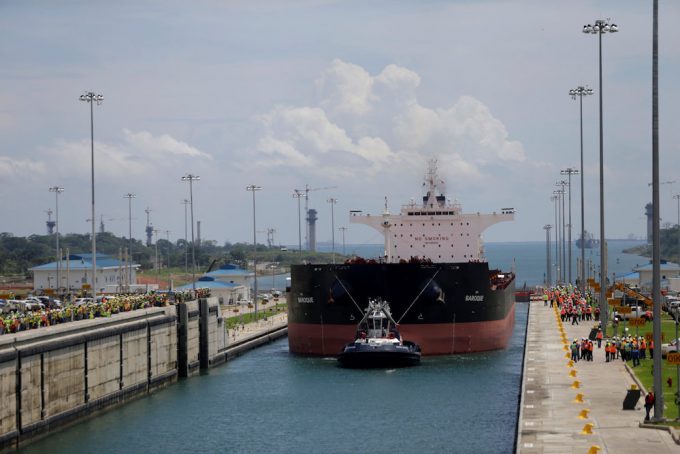Carriers unveil Panama Canal transit surcharges for new year
Two major carriers have announced new Panama Canal surcharges on Asia-US east coast transits in ...
FDX: ABOUT USPS PRIVATISATIONFDX: CCO VIEWFDX: LOWER GUIDANCE FDX: DISRUPTING AIR FREIGHTFDX: FOCUS ON KEY VERTICALFDX: LTL OUTLOOKGXO: NEW LOW LINE: NEW LOW FDX: INDUSTRIAL WOESFDX: HEALTH CHECKFDX: TRADING UPDATEWMT: GREEN WOESFDX: FREIGHT BREAK-UPFDX: WAITING FOR THE SPINHON: BREAK-UP ALLUREDSV: BREACHING SUPPORTVW: BOLT-ON DEALAMZN: TOP PICK
FDX: ABOUT USPS PRIVATISATIONFDX: CCO VIEWFDX: LOWER GUIDANCE FDX: DISRUPTING AIR FREIGHTFDX: FOCUS ON KEY VERTICALFDX: LTL OUTLOOKGXO: NEW LOW LINE: NEW LOW FDX: INDUSTRIAL WOESFDX: HEALTH CHECKFDX: TRADING UPDATEWMT: GREEN WOESFDX: FREIGHT BREAK-UPFDX: WAITING FOR THE SPINHON: BREAK-UP ALLUREDSV: BREACHING SUPPORTVW: BOLT-ON DEALAMZN: TOP PICK

Water levels at the Panama Canal returning to normal faster than anticipated means the permissible draught for vessels can be increased again, from tomorrow.
Above-average rainfall in recent months has meant that, following the 26 June revision of the limit to 14.33 metres, Panama Canal Authority (ACP) from tomorrow will allow vessels with a draught of up to 14.63 metres to transit the canal.
Data from ACP today shows water levels in the Gatun Lake, the canal’s central reservoir, have increased to 25.5 metres, bringing it to just above the five-year July average. However, the water levels remain lower than normal – draught limits are usually set at 15.24 metres.
ACP is now expected to begin work on a second reservoir, costing $1.6bn, to help the canal weather further climate change, following last week’s supreme court overturning a 2006 law preventing its construction.
Situated on the Río Indio, west of the canal and Gatun Lake, the new reservoir would connected via an 8.4 km concrete tunnel and have an expected capacity of some 1.5 billion cubic metres of water. Construction would take four years, ACP said, and mean relocating some 2,000 people.
Canal administrator Ricaurte Vásquez Morales said climate change, reduced rainfall and an increase in population had created an urgent need for the extra reservoir.
He added: “We want to make it clear that the canal does not own the land within the hydrographic basin; we have the mandate to protect the resources within it, as well as to take actions to improve the quality of life of the people who live there.”
Meanwhile, the increased rainfall will come as a major relief for shipping after the El Niño phenomenon, known to have been exacerbated by climate change, which causes periodic droughts across South and Central America.
However, one study of the Amazon river basin found that El Niño’s role in last year’s drought was “overstated” compared with that of climate change. The Amazon may not recover fully until 2026, according to some projections, leaving crucial arteries for river-borne trade unnavigable.
Comment on this article